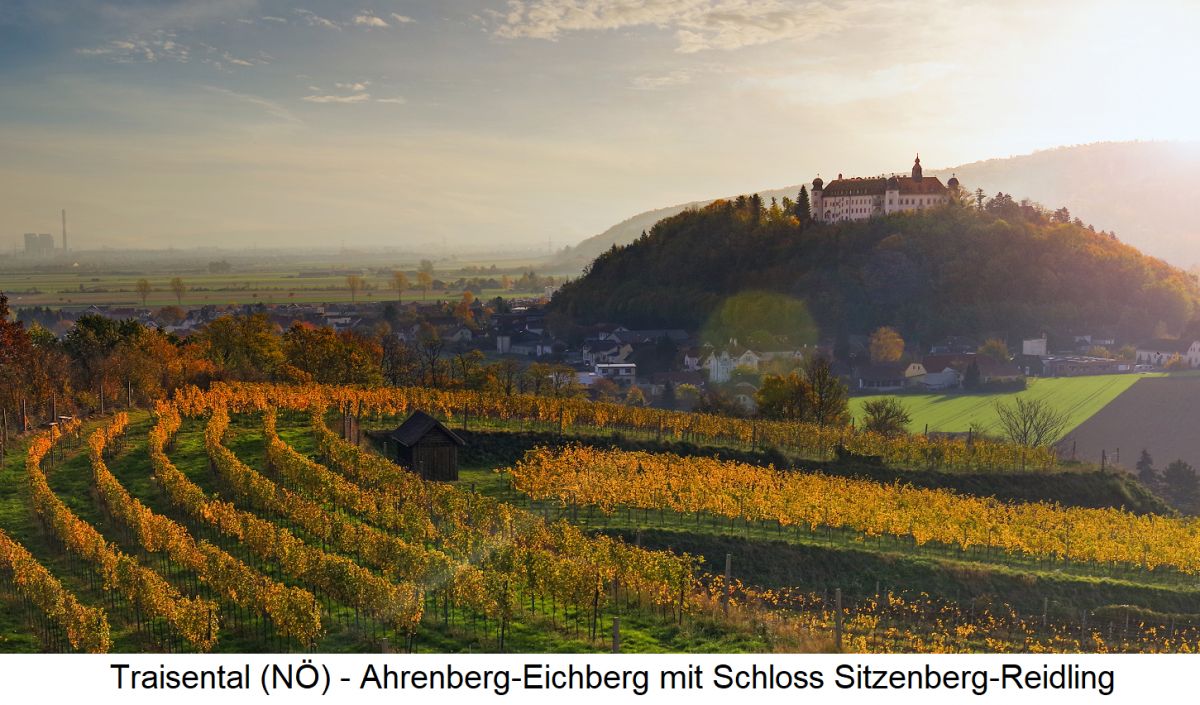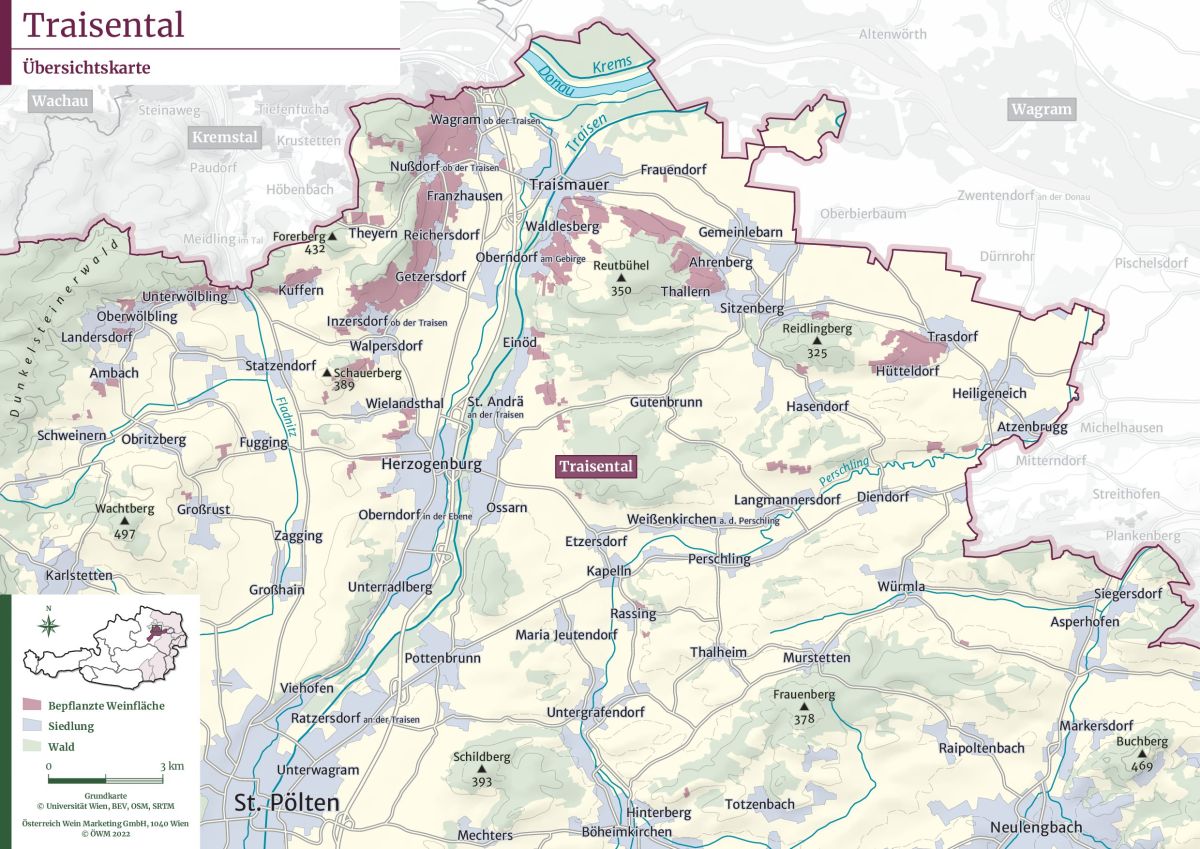Since the 2006 vintage, wine-legally defined DAC area (specific wine-growing region) in the Austrian wine-growing region of Lower Austria (generic wine-growing region). See under Traisental.
Traisental
One of the eight specific wine-growing areas in the Austrian province or generic wine-growing region of Lower Austria. Incidentally, it is the only wine-growing region in the Mostviertel. It lies to the west of Vienna, borders the Danube to the north and is bordered to the south by the Lower Austrian capital St. Pölten. The current extent was created in 1995 by separating it from the wine-growing region of Donauland (now Wagram). The name was given by the 80 km long Traisen tributary, which flows through it from Herzogenburg in the south to Traismauer in the north and then flows into the Danube at Krems.

History
The Traisen Valley is an ancient wine-growing region. A grape seed find from the Bronze Age 2,000 B. C. and a Celtic bronze bucket from 450 B.C. with drinking scenes at a festival show it to be one of the oldest wine-growing areas in Austria. The town of Traismauer was an old Roman town; the Limes, the wall against the Germanic tribes invading from the north, ran through here. According to legend, the Nibelungs were served wine in Traismauer on their way to King Etzel. In 1673, at a wine tasting, Inzersdorf wines were rated higher than those from the Wachau.
Climate & Soils
The predominant soil type consists of dry, sandy and gravelly-loamy layers. The climate is subject to Pannonian and continental influence, the Danube has a thermoregulating effect. The largest wine-growing community is Traismauer with about 200 hectares of vineyards. In Inzersdorf, monasteries such as Passau and Salzburg already owned vineyards around 1000. Other communities are Ambach, Angern, Atzenbrugg, Getzersdorf, Herzogenburg, Inzersdorf, Nasenberg, Nussdorf, Oberndorf, Oberwölbling, Reichersdorf, Sitzenberg-Reidling, Statzendorf, Waldlesberg and Würmla. Well-known vineyards are Engelreich, Gießgraben, Grillenbühel, Hausberg (named 950), Händlgraben, Pletzengraben, Rafasetzen, Wöbling and Zwirch.

Grape variety list
In 2022, the vineyards covered a total of 849 hectares of vines. Compared to 2015 with 815 hectares, this was an increase of 34 hectares (4%). The share of red wine varieties amounts to 13%, the share of white wine varieties to 87%. Grüner Veltliner dominates with well over half of the stock, followed by Zweigelt, Riesling, Muskateller and Müller-Thurgau.
Grape variety
|
in Austria
|
Colour |
HA
|
%
|
HA
|
%
|
| Grüner Veltliner | Weißgipfler | white | 528 | 62,3 | 478 | 58,6 |
| Zweigelt | Blue Zweigelt, Rotburger | red | 69 | 8,1 | 75 | 9,2 |
| White Riesling | Riesling, Rhine Riesling | white | 53 | 6,2 | 49 | 6,0 |
| Muscat Blanc | Yellow M., Red M. / Muscat Blanc | white | 29 | 3,4 | 20 | 2,4 |
| Müller-Thurgau | Rivaner | white | 20 | 2,3 | 27 | 3,3 |
| Chardonnay | Morillon - not used in Lower Austria | white | 19 | 2,2 | 16 | 1,9 |
| Sauvignon Blanc | Muscat Sylvaner | white | 15 | 1,7 | 13 | 1,5 |
| Blue Portugieser | - | red | 15 | 1,7 | 29 | 3,5 |
| White Burgundy | Pinot Blanc, Klevner | white | 13 | 1,5 | 13 | 1,5 |
| Frühroter VeltlinerFrühroter... |
Voices of our members

For my many years of work as an editor with a wine and culinary focus, I always like to inform myself about special questions at Wine lexicon. Spontaneous reading and following links often leads to exciting discoveries in the wide world of wine.
Dr. Christa Hanten
Fachjournalistin, Lektorin und Verkosterin, Wien